Cheerioats before Cheerios
Cheerios was introduced on May 1, 1941 as Cheerioats, but the name was changed to Cheerios in 1945. By the early 1900s cereal companies had wheat, corn, and rice cereals but one made mostly of oats had yet to gain in popularity. Cheerioats was made of 75% oats with corn and rye add for flavor. The name emphasized the main ingredient to distinguish it from other cereals on the shelves. It was promoted as a modern ready to eat oatmeal cereal “no cooking needed”. In the first year that Cheerioats appeared in stores General Mills sold 21.6 million boxes.
Approximately ten different shapes and sizes were considered for Cheerioats before the small “o” shape we know was chosen. Lester Borchardt was a physicist working for General Mills in Minnesota. He and his team developed a puffing gun making the dough puff into an “o” shape. The Vitamin-enriched dough is heated and shot out of the gun at hundreds of miles per hour. Puffing is a pressurized flash cooking process that has been used to make puffed rice and puffed wheat since 1904.
In 1945 the Quaker Oats Company issued a trademark infringement complaint objecting to the term “oats” as a commercial name. To avoid a trial General Mills changed the names to Cheerios in 1945. The new name Cheerios was inspired in part by the shape of the cereal.
By 1951 Cheerios was the top-selling cold cereal sold by General Mills. Today, Cheerios continue to dominate the market with about one eighth of all cereal boxes sold in the United States being Cheerios.
Below are four advertisements for Cheerioats from the back of The Saturday Evening Post in 1942 and 1943. Notice that the advertisements are not directed toward children but adults. During World War II companies and advertisers looked for ways to get behind the war effort. Today Cheerios does not have a mascot, but then they had Cheeri O’leary who appeared in printed ads in the 1940s. Their advertisement also included early examples of effective cross-marketing campaigns with such stars as Claudette Colbert and Johnny Mack Brown, both were prominent Hollywood actors.
To leave comment or suggestions please click the pencil icon to the right of the post.
The Saturday Evening Post. August 29, 1942
This advertisement promotes a ready to eat oatmeal cereal and the use of maple syrup to save on sugar during the war. It also included a cross-marketing campaign for Universal Picture’s Johnny Mack Brown’s movie “Boss of Hangtown Mesa”.
The Saturday Evening Post. October 24, 1942
This advertisement encourages eating healthy during war rationing and uses Uncle Sam and Cheeri O’leery to promote a new kind of healthy ready-to-eat oatmeal cereal.
The Saturday Evening Post. April 10, 1943
This advertisement encouraged war workers not to skip their first meal of the day and has Cheeri O’leary helping with seven menu ideas for breakfast. All include Cheerioats of course.
The Saturday Evening Post. August 28, 1943
This advertisement is an example of cross-marketing promoting “So Proudly We Hale” by Paramount Pictures staring Claudette Colbert. Cheeri O’leary is also here in uniform informing the public of the nutritional value in a rather strange descriptions of the vitamin’s properties.
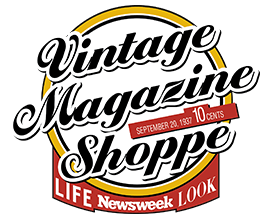

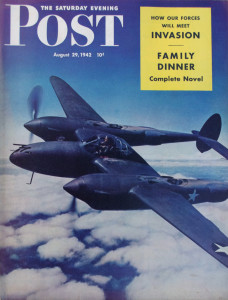
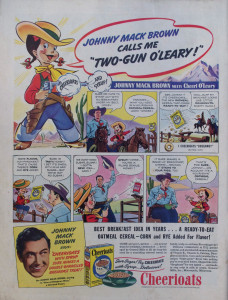
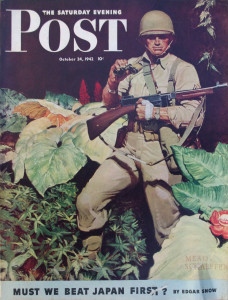
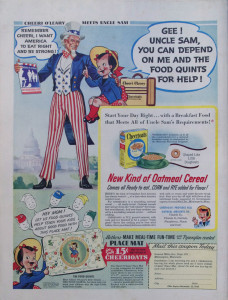
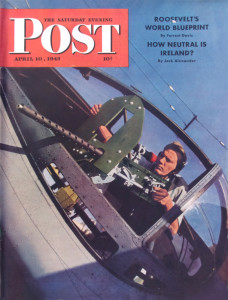
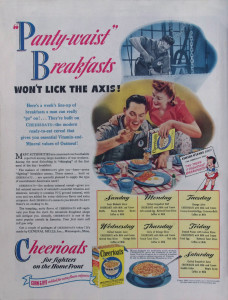
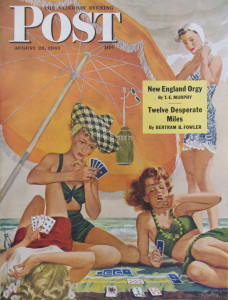
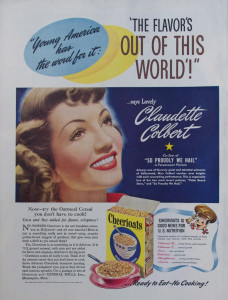
Leave a Reply
Want to join the discussion?Feel free to contribute!